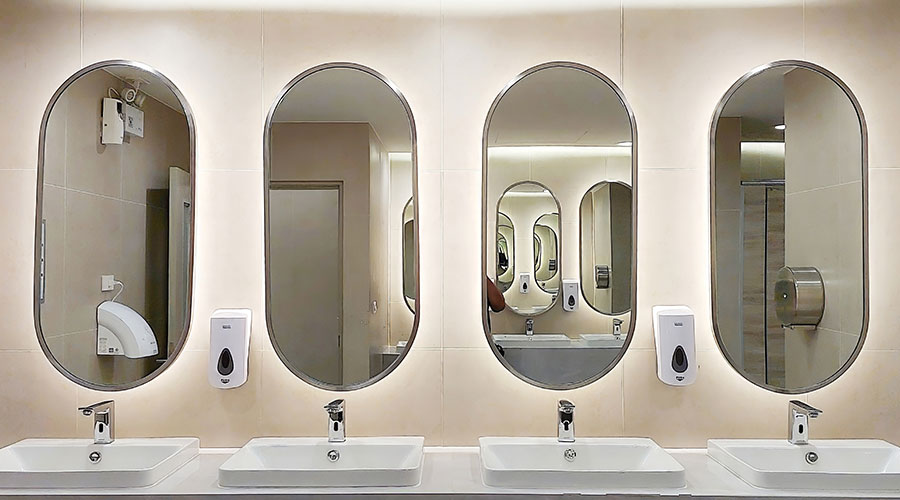Managing Water Use Vital to Achieving Sustainability
New plumbing products and systems have come a long way in terms of performance and water conservation in recent years. Unfortunately, restrooms in many institutional and commercial facilities continue to use outdated and inefficient plumbing fixtures, valves, toilets and faucets that contribute to water waste and drive up utility costs.
By identifying top water wasters in restrooms and fine-tuning inspection, maintenance, and monitoring procedures, maintenance and engineering managers can eliminate or minimize water waste. Beyond that they can use benchmarks to determine whether a plumbing retrofit is the most appropriate course of action.
Watching For Water Waste
Outdated technology, piping leaks, and seal leaks are three of the top water-wasters in restroom plumbing systems. Old fixtures — those made before 1992, when regulations on low-flow showerheads, toilets, urinals, and sink faucets went into effect — used twice as much water as newer fixtures. This combination can make it difficult for managers to hold the line on utility budgets, especially when added to continued water and sewer rate increases.
Allowing water to run when fixtures are not in use is another water-waster. This situation can result from leaking valve gaskets and fittings, as well as corroded piping. It also can result from leaking toilet seals that go unnoticed because they are hidden under floors or in walls. Only when the water shows up in another area as puddles on floors or soggy wallboard can technicians trace the leak back to the source.
Clogs in toilets, tubs, and showers that result in overflows also are culprits. Often, but not always, building occupants spot and report them right away, due to the water on floors.
Looking For Trouble
Vigilance is the best defense against wasted water in restroom plumbing systems. The sooner technicians can identify the source, the quicker they can prevent water waste. Regular, preventive inspections are the surest way to spot and correct problems.
The first and least costly method to eliminate waste is to look for leaks and high flow rates and, where detected, to replace leaking fixtures, faucet aerators, shower heads, and toilet valves with the newer products that use less water. Replacing high-flow restrictors with low-flow restrictors can reduce water consumption at each faucet by 50 percent.
Another waste reducer is submetering, which measures the flows in various areas and can help managers determine which buildings or systems are the biggest users and wasters. One quick way to determine the presence of leaks is to read the meter at two-hour intervals when no water is being used. The difference between the two is water wasted from leaks. With this comparison, managers can focus conservation efforts and resources on projects and produce the largest paybacks.
Related Topics:













